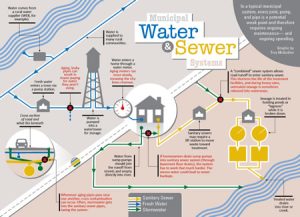 Guys, I don’t want to be annoying and repeat whatever you already know about a healthy lifestyle. What I want to do is provide you with some tips based on my information database on this topic and my personal experience.
Guys, I don’t want to be annoying and repeat whatever you already know about a healthy lifestyle. What I want to do is provide you with some tips based on my information database on this topic and my personal experience.
PART I: AIR AND WATER
Every person needs to sleep, breathe, drink water, and eat daily, in addition to engaging in physical and mental activities.
Let’s separate it in the following way:
- Breathing fresh air vs. ventilated air in the room
- Drinking clean liquid vs. contaminated or unfiltered
- Eating healthy food vs. junk food
- Exercising regularly vs. ignoring physical activities
- Challenge your brain vs. letting it flow without any challenge
- Sleeping enough vs. sleep deprivation
Let’s talk about fresh air first. If you live in a village or suburb, you have the luxury of breathing fresh, non-polluted air, unless you are a heavy cigarette smoker or rarely go out of your home. The picture will be different if you are living in a large city or near a factory that pollutes the air, encompassing the entire Mendeleev table.
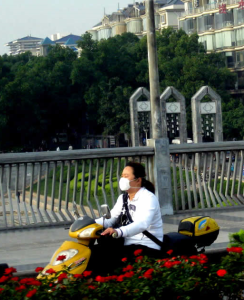 The level of pollution could be so significant that it will directly affect your health in a short time.
The level of pollution could be so significant that it will directly affect your health in a short time.
When I visited China, I went to Beijing, the country's capital. This is the first time I saw what pollution looks like and feels like. Many people walking on the street or riding bicycles had covered their mouths with masks. The city was grey. The buildings were grey. The air was like a grayish fog. And the people were not friendly either, with their stone-like faces.
If you live in an area with poor air quality, consider the long-term health implications. Consider allocating as many days as possible to drive out of that area and spend the weekend in nature.
Another bad experience was in Cuenca, Ecuador. The city is gorgeous. The people are friendly. However, the streets were narrow and the cars’ exhaust systems were still unregulated. Even while sleeping in the hotel room with the windows completely closed, you could still feel the smell of a car’s exhaust. Ouch!
Try to ventilate your rooms as often as possible. Clean your air filters in both your house and car on schedule. Breathe fresh air!
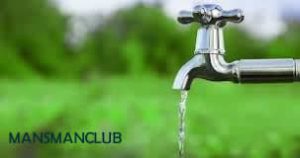 It is paramount for your health to drink clean liquids (not just water). It is even more critical for your long-term health. Some of the adverse effects of drinking contaminated water can be immediate, such as gastrointestinal and stomach illnesses, including nausea, vomiting, cramps, and diarrhea. In contrast, others may not be noticed for many years.
It is paramount for your health to drink clean liquids (not just water). It is even more critical for your long-term health. Some of the adverse effects of drinking contaminated water can be immediate, such as gastrointestinal and stomach illnesses, including nausea, vomiting, cramps, and diarrhea. In contrast, others may not be noticed for many years.
Many people are adamant about drinking plenty of water, but how many consider the potential long-term health effects of drinking unfiltered water?
Most public water systems collect water from both surface and groundwater sources for public consumption. This water is treated, of course, but neither source is entirely free of contaminants. However, more exposure to pollutants can occur during the treatment process of drinking water and even during its delivery to homes. In all of these areas, there are many types of chemicals and contaminants to which drinking water is exposed. This can cause men acute and chronic health effects in some cases.
- How Water Can Become Contaminated
Water can be contaminated with various pollutants in multiple ways, including stormwater and pesticide runoff, industrial waste, acid rain, and the water treatment process itself. Groundwater can also be contaminated with pathogenic microorganisms that may cause disease in humans.
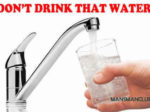 After the water is collected, it is then treated by a local water municipality to make the water safe for drinking. The final stage of the water treatment process involves disinfection with chlorine, which is designed to eliminate any remaining waterborne bacteria.
After the water is collected, it is then treated by a local water municipality to make the water safe for drinking. The final stage of the water treatment process involves disinfection with chlorine, which is designed to eliminate any remaining waterborne bacteria.
However, disinfectants containing chlorine can interact with organic materials in water, creating potentially hazardous byproducts. These include trihalomethanes (THMs) and haloacetic acids (HAAs). Excessive quantities of chlorine or other disinfectants can also have adverse health effects if the water is unfiltered at the tap. Chlorine in water also causes itchy skin and dry, brittle hair. Soft, filtered water, however, leads to suppler skin and smoother hair.
After treatment, the water is stored until it is distributed to communities. Even then, water can be contaminated, most commonly with Giardia or Cryptosporidium. These are protozoan parasites that can cause severe gastrointestinal problems.
Some of the potential problems during distribution include:
- Water main breaks
- Microorganism growth
- Pressure loss (leading to water boil alerts in some cases)
- Cross-contamination with sewage lines due to cracks in the water pipes
The chemical compounds are all around you. They’re found on many fabrics, rugs, and carpets, as well as in cooking pots and pans, outdoor gear, shampoo, shaving cream, makeup, and even dental floss. Increasing numbers of states have found them seeping into water supplies.
While the media and some politicians are screaming about “global warming”, they completely ignore the real danger around us.
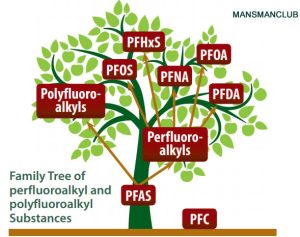 There’s growing evidence that long-term exposure to the perfluoroalkyl and polyfluoroalkyl compounds, or PFAS, can be dangerous, even in tiny amounts.
There’s growing evidence that long-term exposure to the perfluoroalkyl and polyfluoroalkyl compounds, or PFAS, can be dangerous, even in tiny amounts.
U.S. Environmental Protection Agency acting Administrator Andrew Wheeler laid out the agency’s action plan to address PFAS, a family of chemicals that includes PFOA and PFOS. PFOA and PFOS are toxic substances that have contaminated drinking water in several New York communities.
At hearings around the country last year, local and state officials requested that the agency establish a nationwide maximum level for PFAS in drinking water to prevent contamination and hold polluting parties accountable.
Recent scientific reports have estimated that nearly all people in the U.S. have some PFAS chemicals in their blood. Studies of workers exposed on the job and people who drank contaminated water, in addition to lab analyses of animals, have pointed to ties between some PFAS types and human illness.
EPA-mandated testing of approximately 5,000 of the roughly 150,000 public water systems in the U.S., completed in 2016, found dangerous levels of the same two PFAS compounds in 66 systems. Local and state testing since then has identified high levels in scores of additional systems.
Contaminated materials are disposed of in landfills and sewage treatment systems. Firefighting foams are sprayed on the ground. The chemicals seep into soils, waterways, sediments, and groundwater; some are incinerated, generating air pollution.
(click to zoom in and read a note in the right corner)
Municipal water supplies in cities and towns are maintained and tested by the local authorities (do you trust them?); however, privately-owned water sources are the responsibility of the homeowner or landowner.
It is essential that private healthy water is tested regularly – at least three times per year – and that the well is maintained at all times. Wells owners may also wish to install additional drinking water disinfection devices to ensure that the water supplied from their wells is consistently safe to drink.
You have enough information to think twice before drinking unfiltered water. Here are choices of drinking water:
- At home
- Unfiltered from the tap (from Municipal water system or local wells)
- Barely filtered from the fridge (including ice). When was the last time you changed the fridge filter?
- Bottled water
- Filtered with reverse osmosis-type systems
- Filtered with Brita-style filters
- At work
- Unfiltered from the tap
- Barely filtered from the fridge (including ice)
- Bottled water
- In the restaurant
- Unknown, including ice in the drinks
- In the soups
- On vacation
- Unknown, including ice in the drinks, especially in resorts and cruises
- In the friend’s house (mostly)
- Unfiltered from the tap
- Barely filtered from the fridge (including ice)
- Bottled water
- On the street
- Bottled water
- Unfiltered from the tap
Should I mention that tap water is usually used for washing fruits and veggies? Do you think restaurants use filtered water for that?
Okay, I didn't try to scare you; I just wanted to raise your awareness.
You may see the answer to this problem in the purchase of bottled water. After a simple calculation, you should agree that this is the most expensive solution. Also, read more about the bottled water test. Did you know that recent research has revealed the presence of numerous plastic particles in each bottle of water? So, what are the alternatives?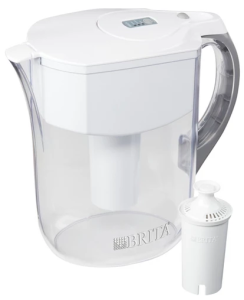
A. Pitcher-type filters like Brita
B. Reverse Osmosis.
C. Complete water-filtering system installed at the main water pipe in the house (that one may cost you, too!).
My preferred choice? Reverse Osmosis. One of my friends has asked: "What?! What is the animal?"
If you are not familiar with it, read my post in the DIY category. If you are an apartment or house owner, spending between $150 and $180 on a reverse osmosis system will be one of the best investments you can make for yourself and your family.
Final Tips For Safer Water
In addition to the tips I’ve provided, here are a few more general steps you can take to safeguard your family’s water supply:
- If you live near an area where any of the above issues are a problem, test the water for the pollutants you are most concerned about.
- Remember that you can buy high-quality water filtration systems to install throughout your home. Although this can be a costly solution, it is an investment well worth saving for. In the meantime, consider using a more cost-effective water filter system to get started.
- If your area is placed under a water advisory for any reason, follow the directions from your community. Then, identify the problem, educate yourself on the situation, and take further steps to safeguard your family.
- Many companies source their bottled water from tap water, so you cannot simply replace your tap water with bottled water.
- Stay educated and active about what’s going on in your area’s wastewater, chemical plants, fracking facilities, and drinking water wells. Read any notifications and news from your water company as well.
Clean tap water in our homes is essential for good health, but modern life has exposed our families to dangers lurking in our tap water. Take these steps to protect yourself and your family from toxic tap water. It will protect your family against Arsenic, Pesticides, Lead, Fluoride, Harmful Bacteria, Pharmaceuticals' disposal, and even the ingredients of fracking, which uses an enormous amount of local freshwater.
Would you like the article? Please share your information to receive notifications about new posts. 100% spam-free!

